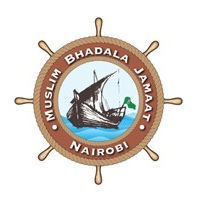Bhadala Jamaat Brief History
The Bhadala Jamaat is a Muslim community with deep-rooted ties to maritime trade and seafaring. Originating from the Sindh region of Pakistan and the Kutch and Saurashtra regions of Gujarat, India, the Bhadalas have a longstanding history of migration and settlement along the East African coast, significantly influencing the region’s economic and social landscapes.
Migration to East Africa
During the 19th and early 20th centuries, the Bhadala community, alongside other Gujarati-speaking groups, migrated to East Africa, seeking opportunities in trade and commerce. Their expertise in maritime activities made them invaluable in the burgeoning trade networks of the Indian Ocean. In Kenya, the Bhadala Sunni Muslims formed a distinct and tightly-knit community, The 10,000 to 20,000 Bhadala Sunni Muslims form a distinct and tightly-knitted community among the 600,000 Indian Muslims in Kenya. Mostly concentrated in Mombassa, on the Indian Ocean, the Bhadalas own and operate many of the traditional sailing ships that navigate the east African coast.
Although Bhadala Muslims are subject to Sunni Islamic law, they tend to rely more on their community councils which regulate many aspects of their lives, including marriage and divorce. As in many other Muslim communities in Kenya, Bhadala Muslim parents tend to choose husbands for their daughters. The Bhadala community councils support this practice and are empowered to ban a women who refuses to abide by her parents’ choice of spouse. A woman who has been banned from her community or family cannot participate in the community activities or organizations and would be deprived of the social and economic benefits of community mutual assistance networks.
Economic Contributions
The Bhadalas, along with other Gujarati business communities, played a pivotal role in the economic development of East Africa. Their involvement in trade, particularly in the ivory trade at Zanzibar, underscored their significant economic influence in the region. Their seafaring heritage facilitated the establishment of robust trade routes between East Africa and the Indian subcontinent, contributing to the economic prosperity of coastal cities like Mombasa and Zanzibar.
Social and Cultural Integration
Despite their distinct cultural and religious practices, the Bhadala community integrated into the East African social fabric while maintaining their unique identity. They established mosques, community centers, and schools, ensuring the preservation of their cultural and religious heritage. Their presence added to the multicultural tapestry of East African society, enriching it with diverse traditions and practices.
Challenges and Adaptations
Throughout their history in East Africa, the Bhadala community faced challenges, including adapting to new social and political environments and addressing issues related to communalism. Their ability to navigate these challenges while preserving their identity is a testament to their resilience and adaptability.
Contemporary Presence
Today, the Bhadala community continues to be an integral part of East Africa’s socio-economic landscape. Their contributions to trade, commerce, and cultural diversity remain significant, reflecting a rich history of migration, adaptation, and integration.
In summary, the Bhadala Jammat’s migration to East Africa has left an indelible mark on the region’s history, economy, and culture. Their journey from the Indian subcontinent to the East African coast exemplifies a narrative of resilience, enterprise, and enduring cultural heritage.
